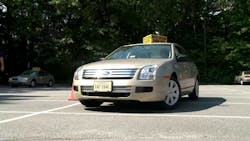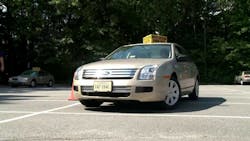Last year, my eldest daughter got her driver’s license. And as part of that process I got an eye-opening look at how the Commonwealth of Virginia expects new drivers like her to get the training they need to operate vehicles safely on U.S. roadways.
I say “eye-opening” because – back when I got my license three decades ago – I went to a solid six weeks of “driver education” over the summer at our local high school; five hours a day, seven days a week, with about 45 minutes a day with me behind the actual wheel of a car. It proved a complete “soup-to-nuts” training program that turned me into a good, safe driver (though I disliked my instructor at the time).Not so today. My eldest first spent a semester of classroom time being taught about traffic laws, safe vehicle operation, etc., followed by a mandatory 90 minute session of parents and their drivers-to-be watching videos about distracted and drunk driving.
Next she took – and passed – the written exam at our local Department of Motor Vehicles (DMV) office to obtain her learner’s permit.
Whew, I said to myself; now all she has to do is take the “Behind the Wheel” one-week physical driving course; the one that would teach her how to operate a vehicle.
At first I thought, “well, a week isn’t all that much” in terms of learning how to drive a car, but hey; maybe there’ve worked out a system after years of research. Heck, it’s said the U.S. Air Force’s pilot training program is so good it can take any qualified individual and get them flying aircraft safely in 22 weeks. Maybe something similar is at work here, I thought.
Uh … no.After the first day, her driving instructor pulled me aside and said, “So you’ve basically been letting her drive around parking lots up to this point, right?” Well, yeah, I responded. You’re going to take her through the rest. That’s what this class is for, correct?
Nope.
She explained that the “Behind the Wheel” course is really a finishing and “final exam” program. The students get their driving skills tweaked and then graded; they have to pass the class in order to get their provisional license (followed 90 or so days later by their real one. If they remain accident- and violation-free, that is.)
Well, then, I asked; who is supposed to do all the initial training?
“You are” came the response.
Huh?
Say that again?
Yup … me. Every student is supposed to accrue 45 hours of on-the-road driving experience – logged and signed by their parents – to get their license in Virginia; and typically that’s all supposed to happen before they take that “Behind the Wheel” class.
To top it all off, parents – that would be me – are supposed to teach and reinforce specific methods of vehicle operation we were never taught, much less use.
For example, I learned to turn a steering wheel hand-over-hand. That method, though, is now frowned upon in favor of what’s called the “push/pull” style that keeps both hands on the wheel at all times.
Fine ... except I can’t teach that because I not only never learned it but don’t use it myself.Needless to say, this discovery proved most unwelcome.
Yet the story ends well.
My daughter’s driving instructor got her quickly up to speed, she passed her “Behind the Wheel” test with flying colors, and then proceeded to accrue 45 hours of safe and spot-on driving to gain her full license.
The reason I’m sharing this story with you relates back to yesterday’s post regarding the growing lack of experience and skills among teenage drivers.
I just have to ask myself; if we’re making parents the primary providers of driver training, is that ensuring that young drivers are getting the skill sets they need? Not that parents are bad instructors, mind you. But seriously: how can we teach our children skills experts think are critical when we don't have those skills to start with?
Now, a lot of folks in the trucking world will no doubt stress that, for time out of mind, the skills needed to safely operate big rigs often got passed down within families. Fathers taught their sons (and daughters) how to shift 18 gears, how to back up to docks, etc., which they in turn passed on to their sons and daughters – much the way apprentices learn time-honored trades such as carpentry, blacksmithing, and such.
Yet driving a truck is very different because one is doing so as a career; as a way to earn a living.
Driving a car, on the other hand, is increasingly becoming an afterthought – taken for granted by a generation that, surprisingly, may not be all that interested in driving cars.
So as we keep looking for ways to make driving vehicles a less deadly exercise in the U.S., maybe we need to go back to beginning; to re-examine how we’re training drivers in the first place.
Just a thought.



